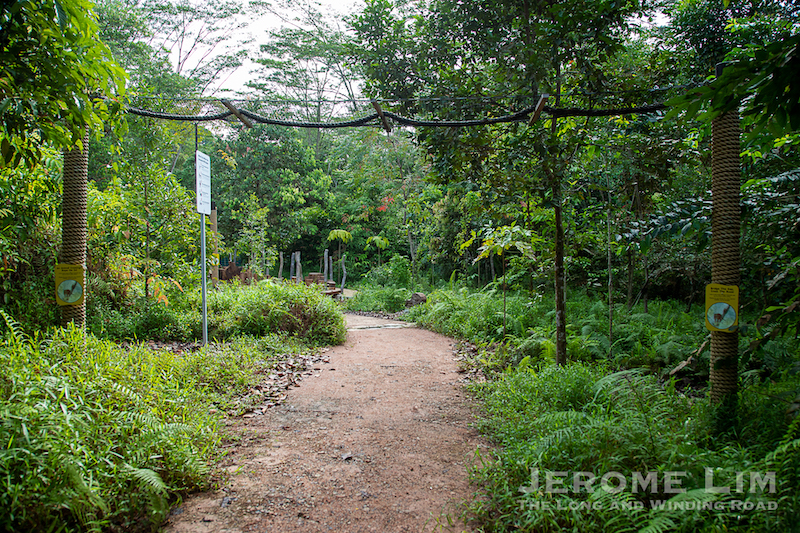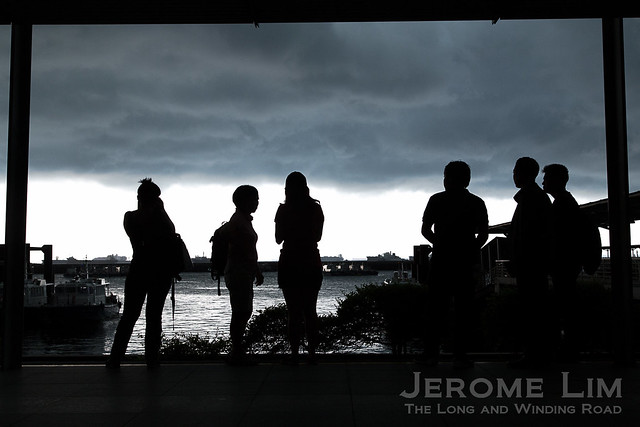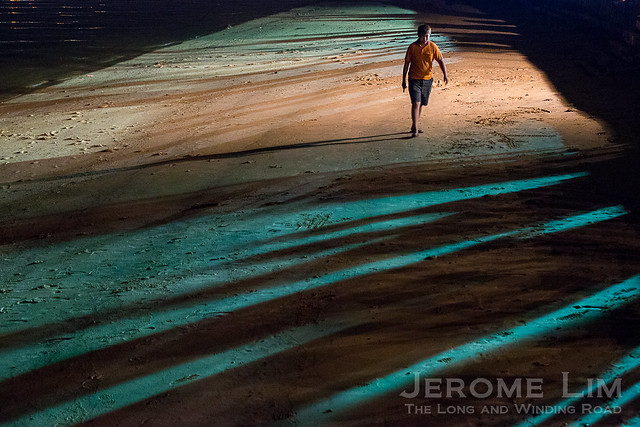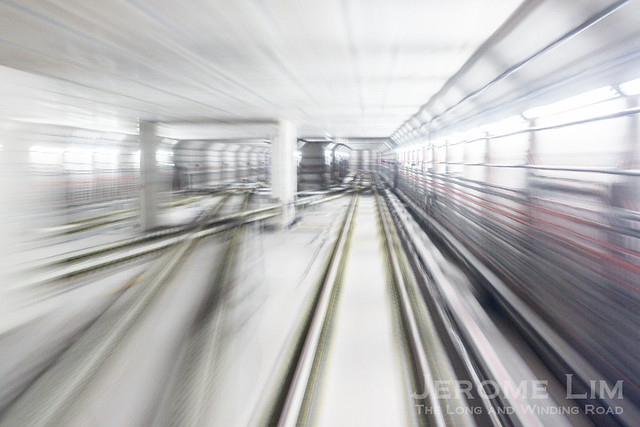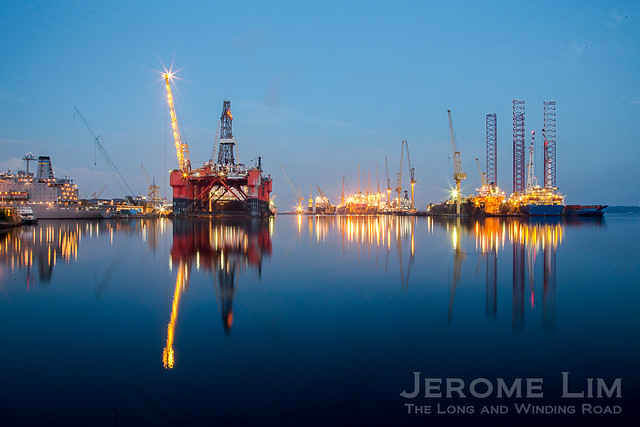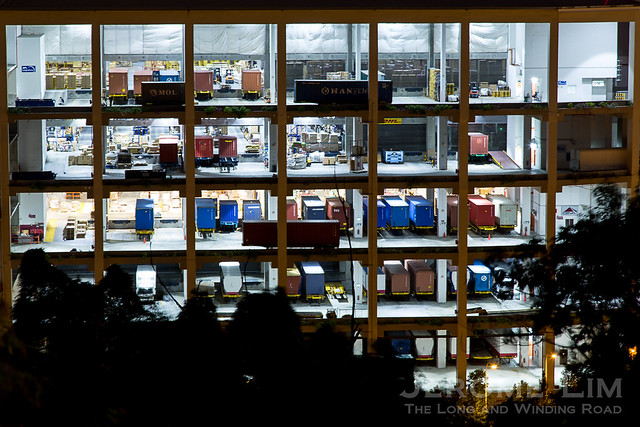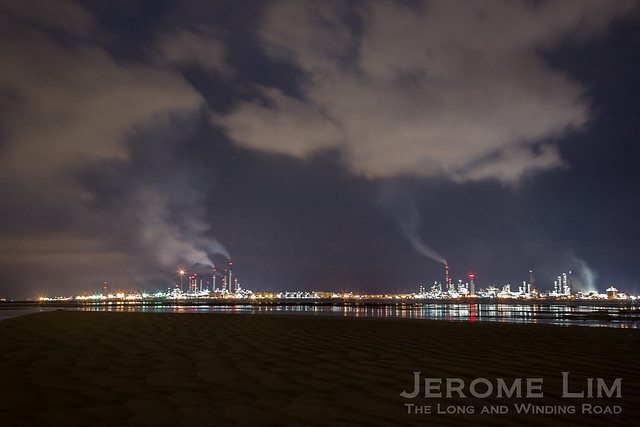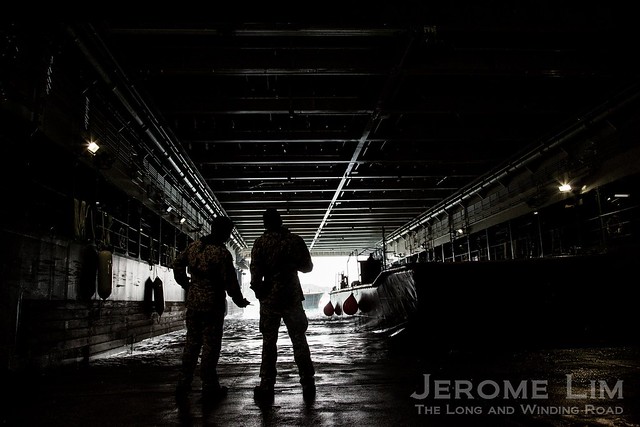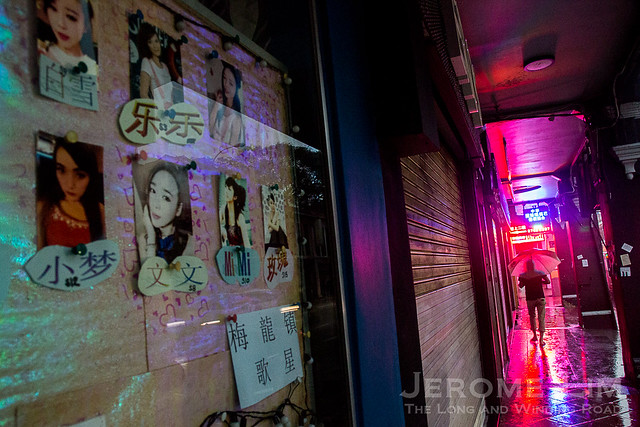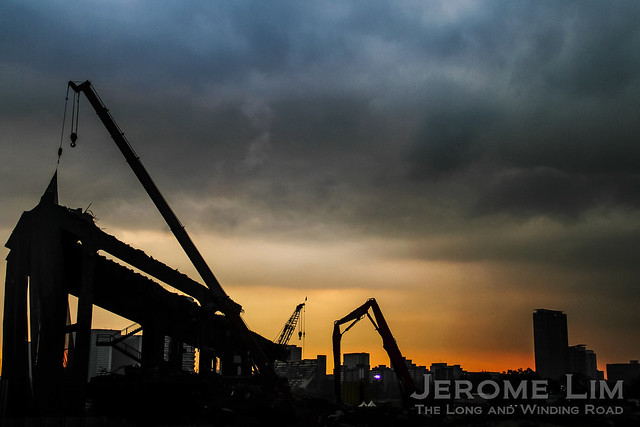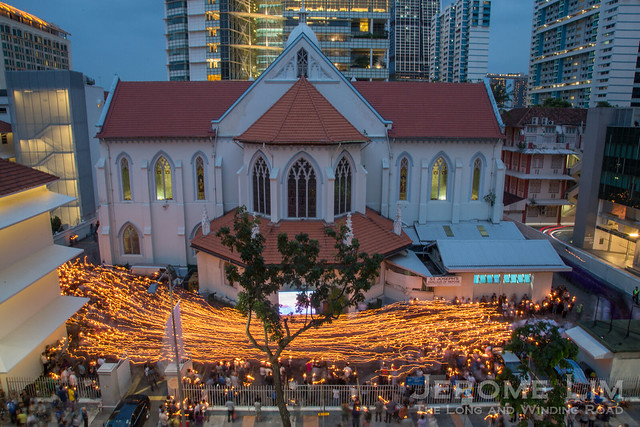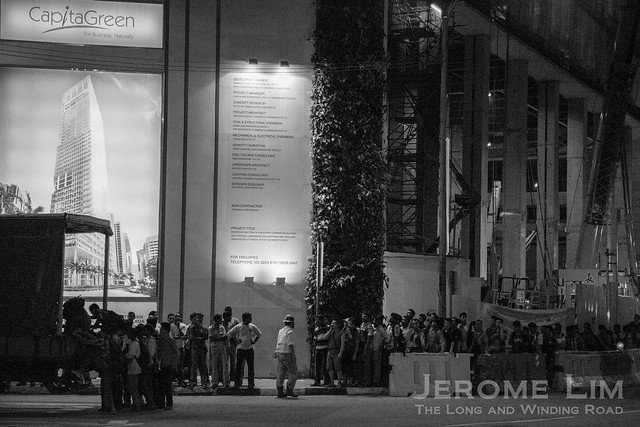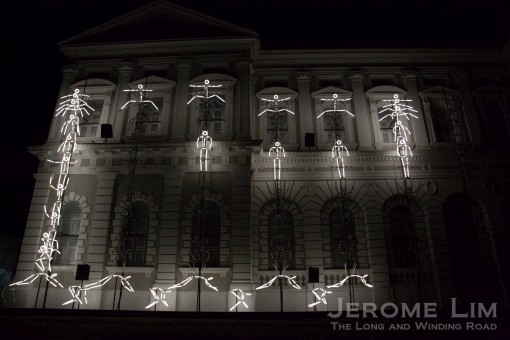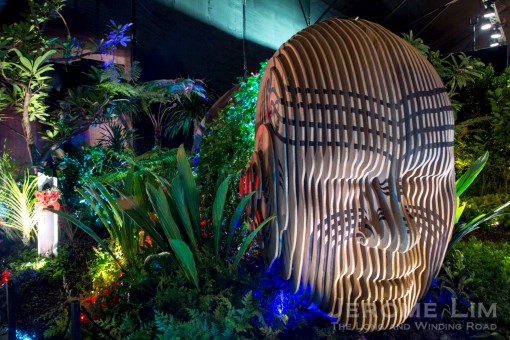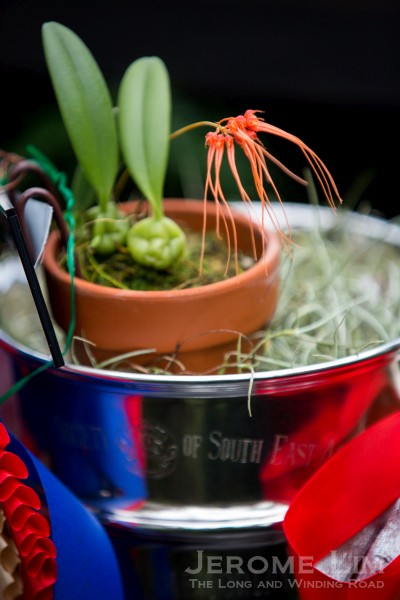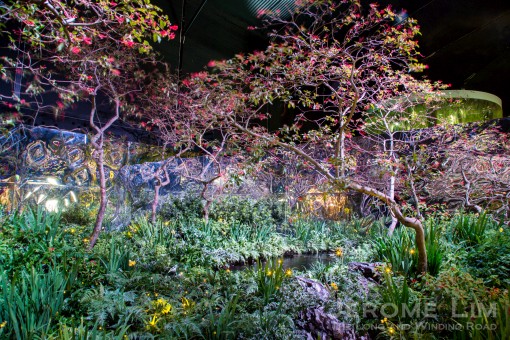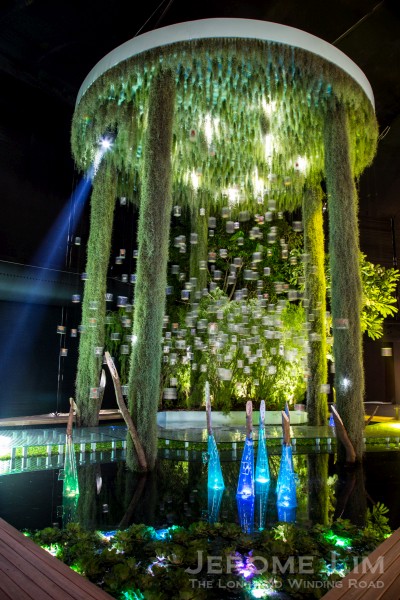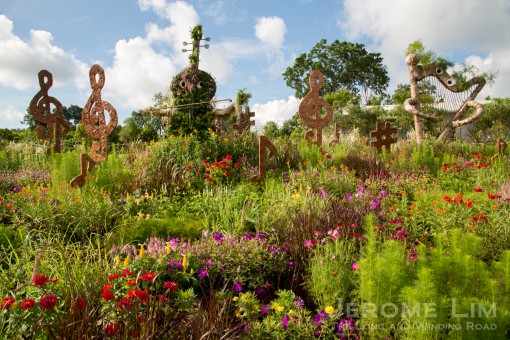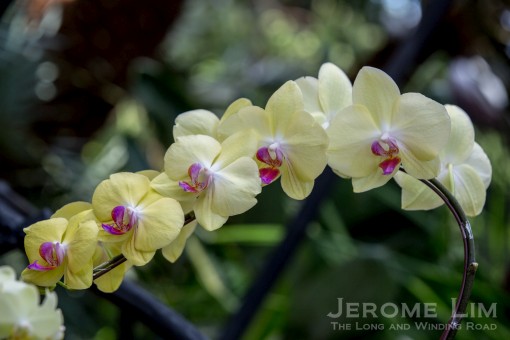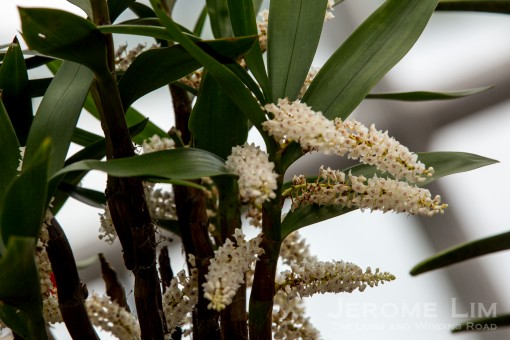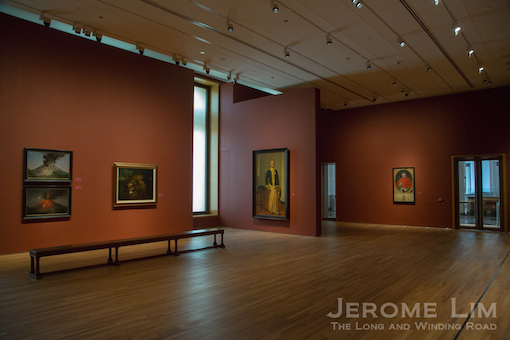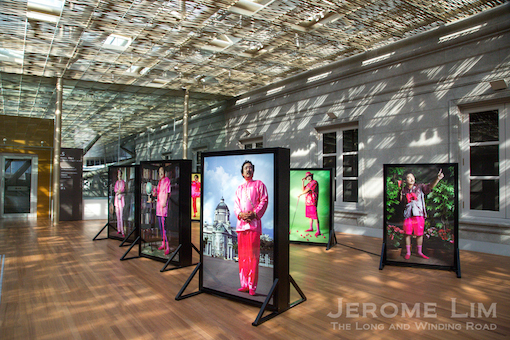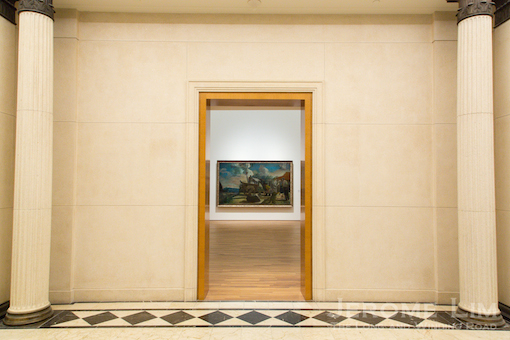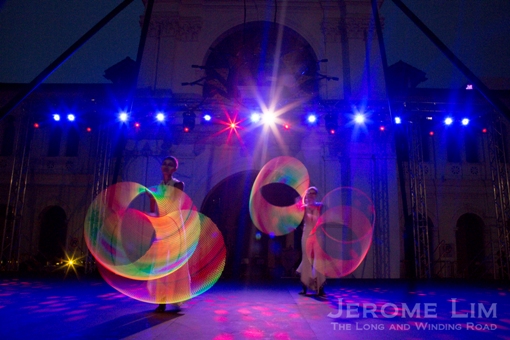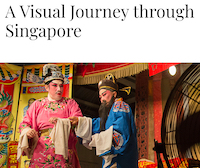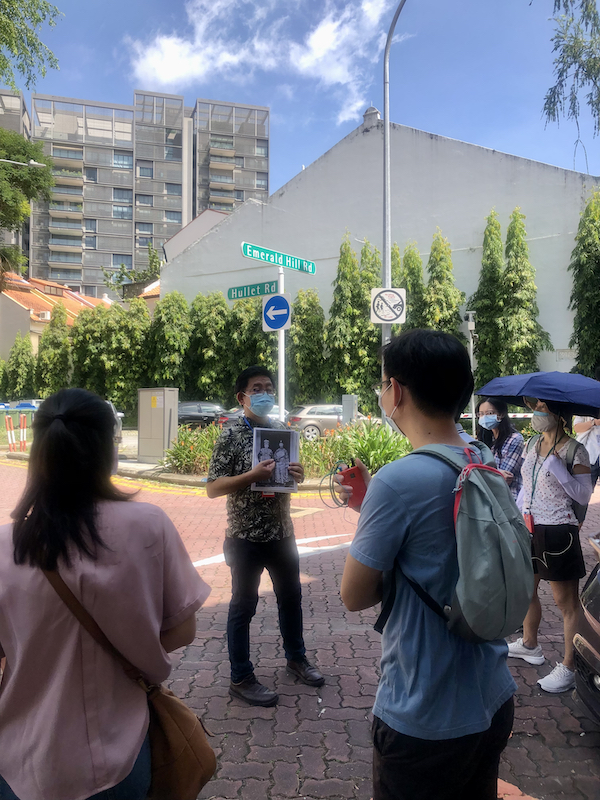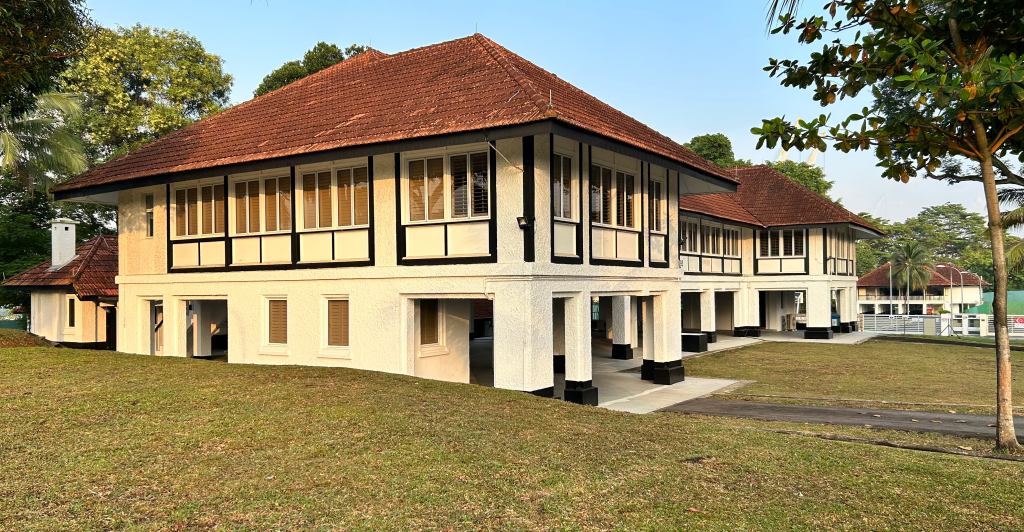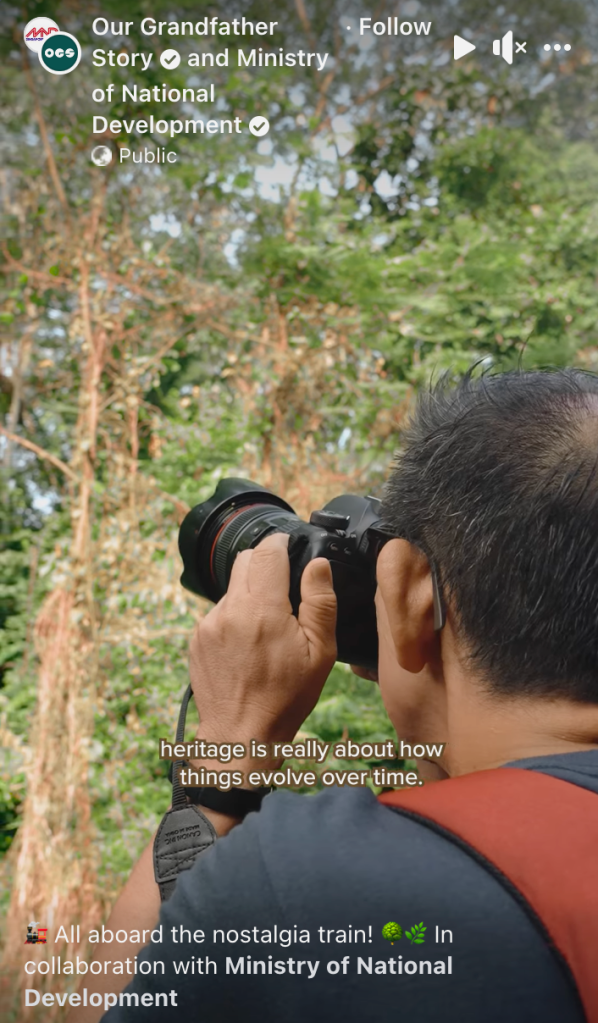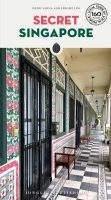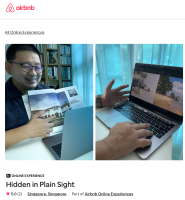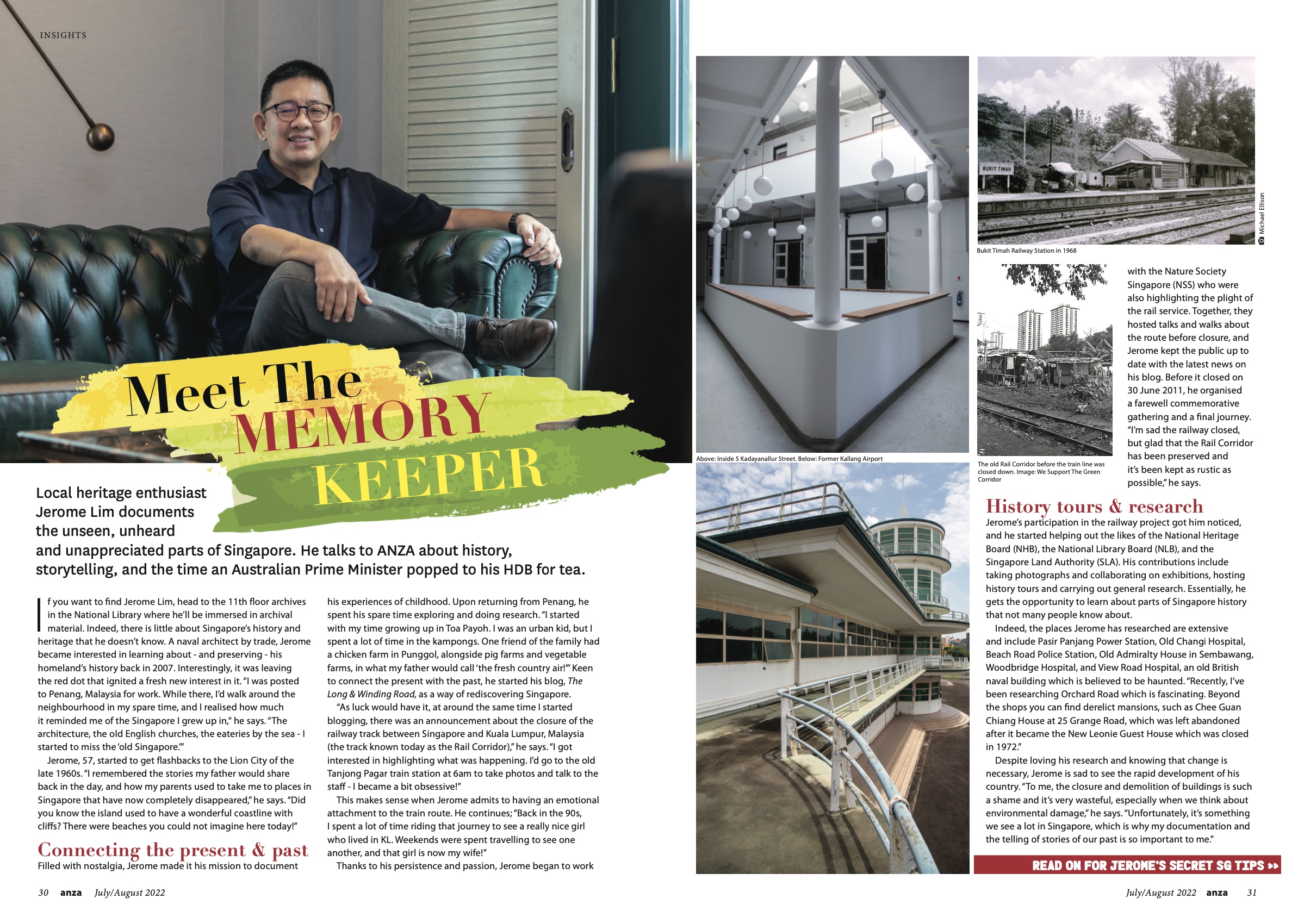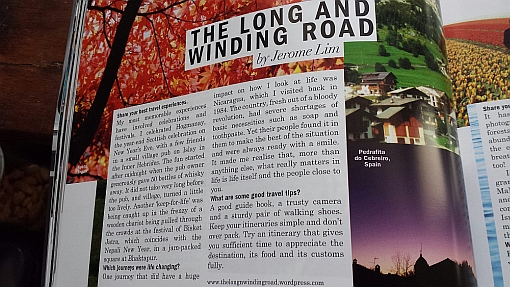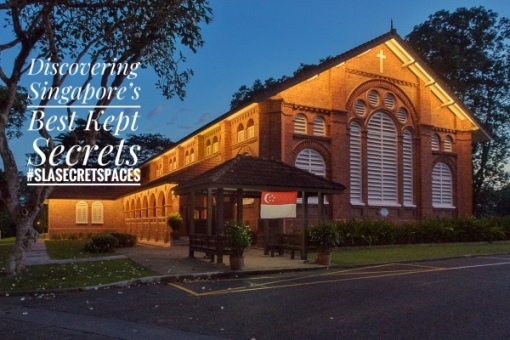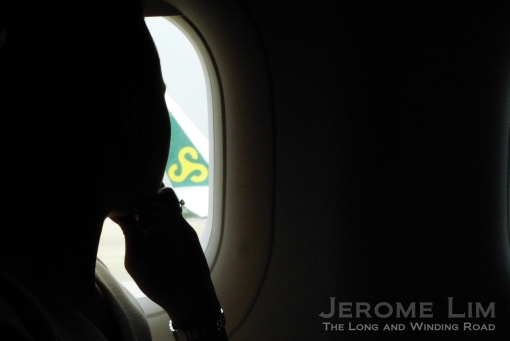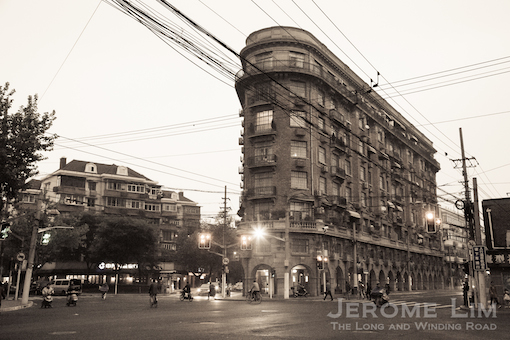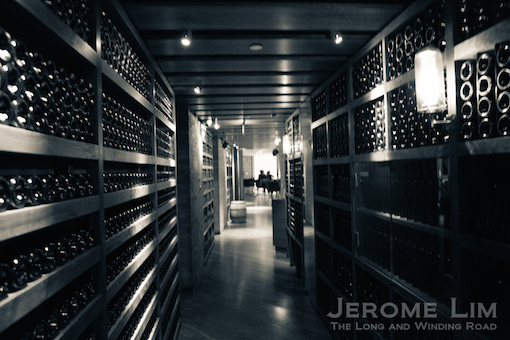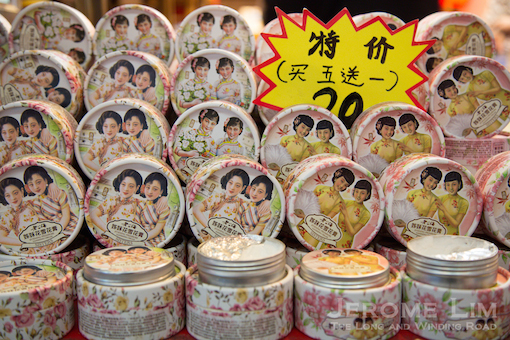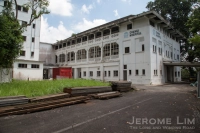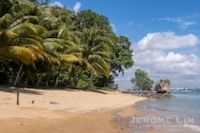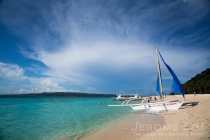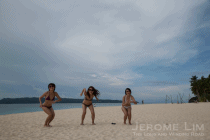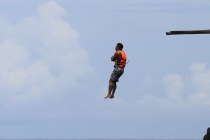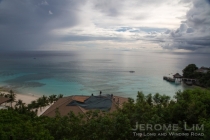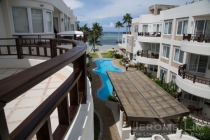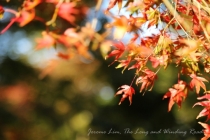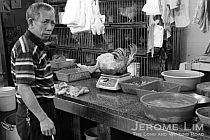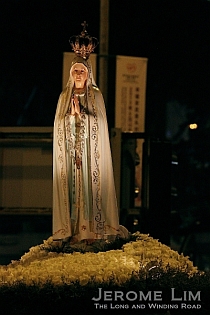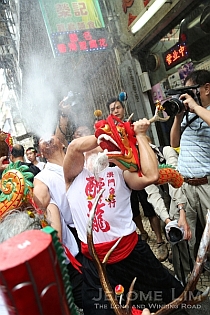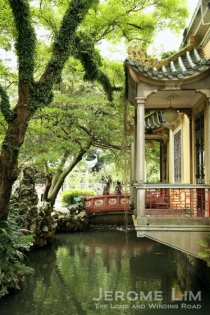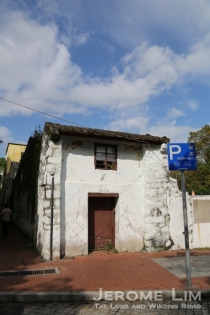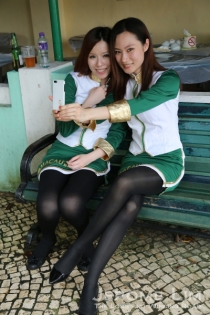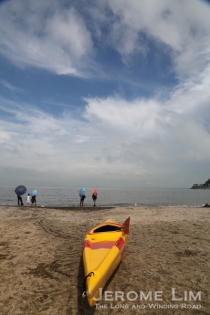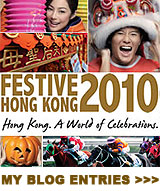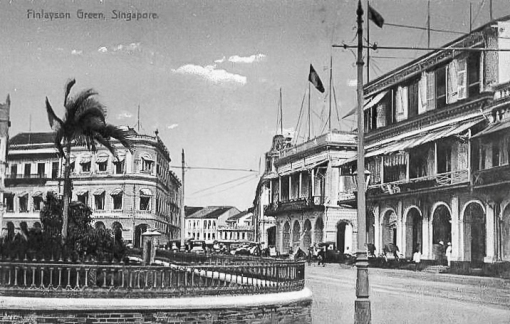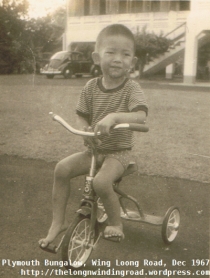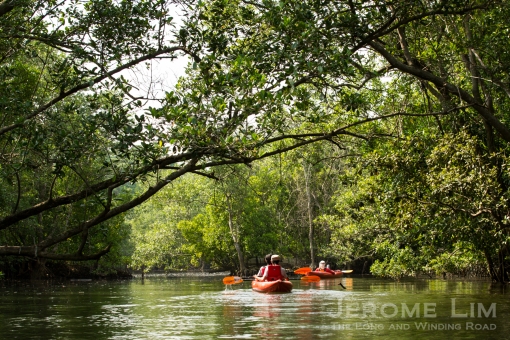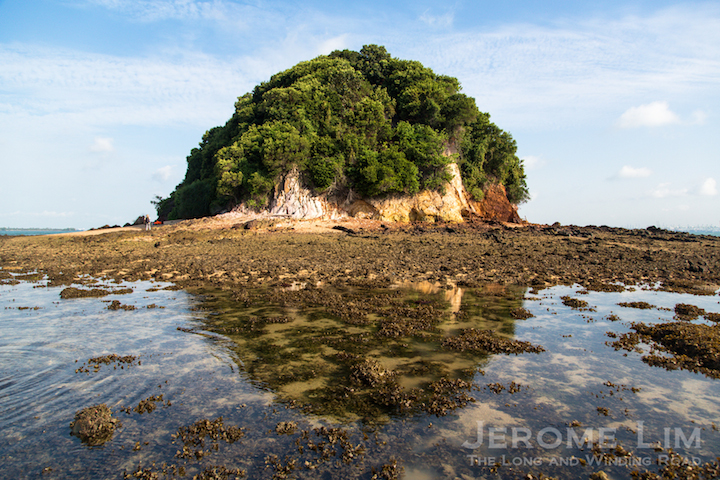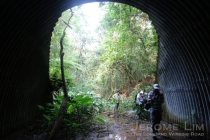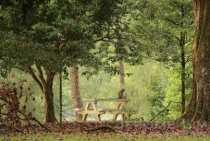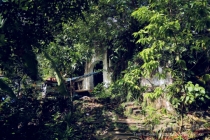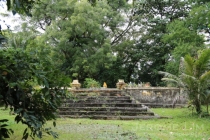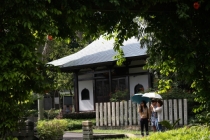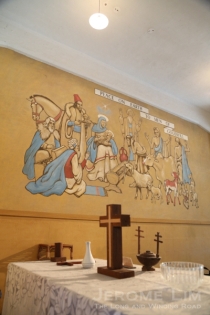From 22 Mar to 21 Apr 2024, the Flower Field in Gardens by the Bay’s Flower Dome, brings Kyoto to Singapore — with yet another dimension is added to what has become an annual Sakura floral display that is now in its ninth year. For the first time, the display features a day-to-night experience, as visitors can immerse in the Japanese traditions of hanami or cherry-blossom viewing, as well as a nighttime experience known as yozakura or night cherry blossoms. The display features the blooms of some 140 trees of over 40 varieties, including plum blossoms from Europe.

This year’s theme revolves around the experience in Kyoto, and specifically the Golden Temple or Kinkakuji. The UNESCO World Heritage temple has been recreated for the display along with recreations of traditional Miyama Village style thatched houses, elements of Japanese gardens such as engawa, a veranda found in traditional homes, a sozu — a bamboo water fountain, the chozuya — a large basin with wooden dippers used to purify oneself at sacred spaces and the ema — small wooden plaques hung at shrines to offer one’s prayers.

Details:
Sakura, Blossom into the Night
22 March to 21 April 2024
9 am to 9 pm
Flower Dome
Gardens by the Bay
Admission charges to Flower Dome apply.


Programmes and Promotions for Sakura, Blossom into the Night

TOURING SPRINGTIME JAPAN
Flower Field Hall
Admission to Flower Dome applies on opening day on Saturday, 23 March 2024.
Admission is free on Sunday, 24 March 2024.
The rich tapestry of Japanese culture and cuisine is showcased at Touring Springtime Japan, where a line-up of activities relate to some of the best that Japan’s six key regions have to offer! Learn about each of the prefectures and the culture and food of these regions, as well as sample delicious snacks from Japan. Don’t miss the chance to experience the age-old tradition of mochi pounding, where a wooden mallet is used to vigorously pound flour into a sticky, delicious mochi cake.On Saturday, March 23, ticket holders to Flower Dome will be the first to experience these exciting cultural experiences. Programmes will then be open to all members of the public for free on Sunday, March 24.
23 March and 24 March 2024, 12.00pm to 7.00pm
Visit www.gardensbythebay.com.sg/touringspringtimejapan for details.

Cultural experiences / programmes include:
HIBIKIYA

Watch Japanese drum group Hibikiya play the recognisable beat of the taiko and other traditional Japanese instruments as well as perform traditional dances.
23 March 2024, 1.30 pm to 2 pm and 3.30 pm to 4 pm

YOSAKOI
Yosakoi is a unique Japanese style of dance and vibrant melange of tradition and modernity. Using a unique instrument known as the Naruko, clapping sounds are made to the beat when dancing.
23 March 2024, 5 pm to 5.30 pm
JAPANESE TEA CEREMONY

This traditional Japanese cultural activity, also known as Chanoyu or Chado, involves the ceremonial preparation and serving of matcha and a Japanese sweet.
23 March and Sunday, 24 March 2024, 10.30 am to 11 am, 11.15 am to 11.45 am, 1 pm to 1.30 pm, 1.45 pm to 2.15 pm
30 March, 31 March, 6 April and 7 April 2024, 11 am to 11.45 am, 12 pm to 12.45 pm, 1 pm to 1.45 pm, 2 pm to 2.45 pm
MOCHITSUKI DEMONSTRATION AND EXPERIENCE
Witness expert mochi makers demonstrate the age-old tradition of transforming rice into delightful mochi. Don’t miss the opportunity to take a turn at wielding the wooden mallet and pounding your own mochi.
23 March 2024, 1 pm to 1.45 pm, 5.45 pm to 6.30 pm
24 March 2024, 2 pm to 2.45 pm, 5.45 pm to 6.30 pm
Free public programmes:
KOTO
Flower Field Hall
Marvel at the lush sounds of Japanese koto by Koto Group of The Japanese Association, Singapore.
24 March 2024, 1 pm to 1.15 pm
JAPANESE FOLK DANCE
Flower Field Hall
Dance along with Minyo Club of The Japanese Association, Singapore as they showcase folk dances handed down from all over Japan.
24 March 2024, 1.30 pm to 1.45 pm
AIKIDO DEMONSTRATION
Flower Field Hall

Aikido, also known as “The Art of Peace”, is a Japanese martial art that embraces harmony. Instead of clashing head-on, practitioners learn to redirect and blend with an opponent’s energy, using throws and joint locks for self-defence without inflicting harm.
24 March 2024, 1.45 pm to 2 pm and 3 pm to 3.15 pm
SUZUME ODORI
Flower Field Hall
Often the highlight of the Sendai Aoba Festival, the popular Suzume Odori – which means “Sparrow Dance” in English – thrills audiences with its unique, birdlike movements and brightly-coloured fans and costumes. The performances are brought to visitors by the Japanese members of Sendai Suzume Odori Singapore.
24 March 2024 Time: 3.30 pm to 3.45 pm, 5.30 pm to 5.45 pm
JCC CINEMA: JOSEE, THE TIGER AND THE FISH
Flower Field Hall
In this heartwarming anime, Tsuneo is a university student and Josee is a young girl who has rarely gone out of the house by herself due to her being unable to walk. The two meet when Tsuneo finds Josee’s grandmother taking her out for an evening walk.
24 March 2024, 3.45 pm to 5.30 pm
ANIME GARDEN
Make a return after four years on 30 and 31 March.
Includes appearances by regional cosplay artists and the popular Cosplay Singles Competition. There is also an exciting concert line-up of Japanese artists, including legendary anisong singer Hiroshi Kitadani, a marketplace offering merchandise and works by regional artists and creators, as well as a selection of Japanese food and drinks.
Details of Events for Anime GardenCOSPLAY SINGLES COMPETITION
Supertree Grove
Free
Cosplayers show off their costuming, armour-making, wig design, make-up, and even acting skills in a fun and friendly competition. The top three winners will receive attractive cash prizes.
Sunday, 31 March 2024, 6.15 pm to 7 pm
CELEBRITY COSPLAYER MEET & GREET
Flower Dome & Supertree Grove
There is no admission charge at Supertree Grove but a ticket is required to enter Flower Dome.
Limited to 100 pax at Flower Dome.
Queue starts 30 minutes before the session.
Take photos with Thames Malerose, Mikki, Baobao, and Xiaoyukiko at Flower Dome and join them for an autograph & Hi-Touch session at Supertree Grove! Bring your official merchandise to participate!
Saturday, 30 March and Sunday, 31 March 2024, Various timings
JAPANESE MUSIC CONCERT
Supertree Grove
Free
Japan Music Night
Featuring Hiro (MY FIRST STORY), TeddyLoid and WISE! (Teriyaki Boyz). This debut performance in Singapore also marks Hiro, TeddyLoid and WISE!’s first time performing together.
Features Japanese acts Hiro from MY FIRST STORY, TeddyLoid, and WISE! If you love anisong, check out these special live performances by Hiroshi Kitadani and NANO! Theme: Japan Music Night Performers: Hiro (MY FIRST STORY), TeddyLoid and WISE! (Teriyaki Boyz). It will see Hiro, TeddyLoid and WISE!’s first time performing together for the first time.
30 March , 8 pm to 9 pm
I Love Anisong
NANO, a Japanese bilingual singer with roots in New York, first captured global attention in 2010 by posting English covers of Japanese songs on YouTube, garnering widespread acclaim. After debuting in 2013, NANO marked a milestone with their inaugural live concert “Remember your colour.” at Shinkiba Studio Coast, where all 2,500 tickets sold out within just a day.
Hiroshi Kitadani, a legendary figure in anime music, is celebrated for lending his vocal talents to the iconic anime series One Piece, where he performed the first, fifteenth, nineteenth (in collaboration with Kishidan), twenty-second, and twenty-sixth opening themes.
31 March 2024, 9 pm to 10 pm
STAGE PERFORMERS
Supertree Grove
Free
Enjoy performances by incredible homegrown talents plus international performers direct from Japan!
30 March 2024, 4 pm onwards
Features: Sparkle Guitar Ensemble, Mike Miller, Allen 徐广利, Narutee, Ryoko, Kirameki FUTURE, DEARKISS, Golden Mix
31 March 2024, 4pm onwards
Features: Tokimeki JUMP, AIJOU, Rae Atrista, alt.titude, Dear Kiss
ANIME MARKETPLACE
Supertree Grove
There is no admission charge to Anime Marketplace but charges apply at the booths.
Relax and have fun at the Anime Marketplace! Treat yourself to yummy Japanese street eats and snag exclusive anime merchandise at the retail booths.
30 March and Sunday, 31 March 2024, 3.30 pm to 10 pm
ANA X GARDENS BY THE BAY SAKURA GIVEAWAY
Win a pair of economy class tickets to ANYWHERE in Japan! Wander beneath a canopy of delicate cherry blossoms and immerse yourself in the ethereal beauty of Sakura season at Flower Dome.
Just scan the contest QR code at the Sakura floral display to answer a simple question and stand a chance to win!
This contest is brought to you by All Nippon Airways (ANA).
Terms and conditions:
Contest period: 22 March to 21 April 2024
The lucky draw is open to Singapore residents, 18 years old and above.
Only one entry per registered ANA member is allowed. Repeated entries will not be
considered.
For more information, visit www.gardensbythebay.com.sg/sakura.
More photographs




























































